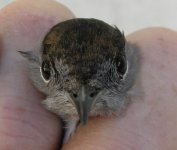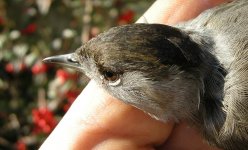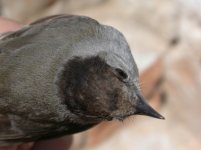Jon Turner
Well-known member
I ringed this Blackcap as a 5M in my garden this morning, and as you can see from the photos, it is showing a lot of brown in the black crown. Much more than I would expect after post-juvenile moult last year. I also ringed a more normal male with just a hint of brown on the forehead.
Anyone seen this feature in winter Blackcaps before?
Anyone seen this feature in winter Blackcaps before?






